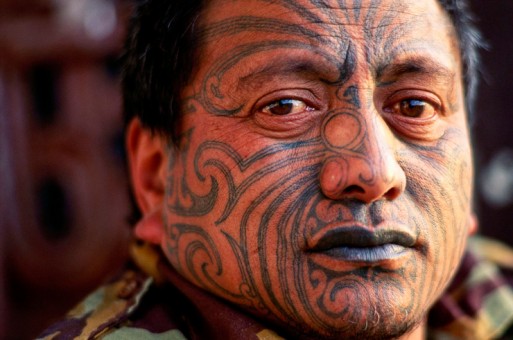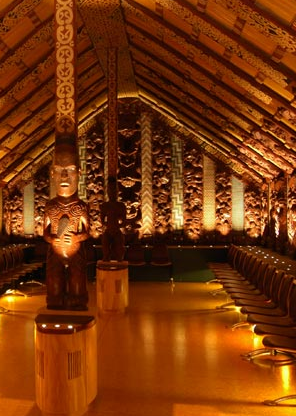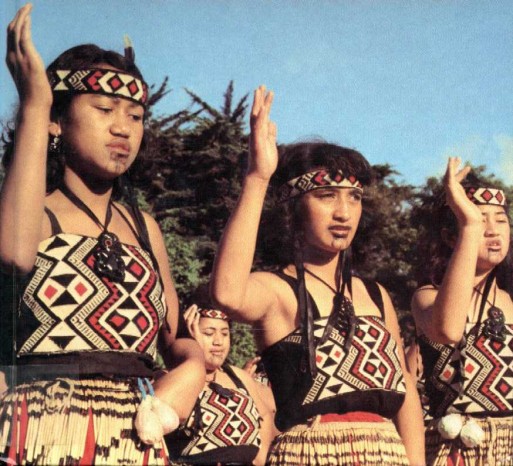Traditional New Zealand death rituals use expression and creativity as a cathartic means to get through the grieving process while memorializing a loved one. It’s a philosophy that is perhaps best represented in the Maori tradition of tattooing, known as “ta moko” or “moko.” Today, the swirling, graphic Maori moko designs are tattooed on individuals across countries. But at its 1250 CE roots, the traditional designs were meant to distinguish between tribes and, most importantly, to memorialize the death of a loved one.
The Maori people of New Zealand had a very rigid social structure, and moko became a way for them to differentiate families. “For men,” explains PBS, “the most prominent areas were the face and the thighs and buttocks, similar to the Samoan pe’a. Women were also tattooed on other parts of the body including the arms, abdomen and thighs.”
As expected, the tattooing method was not easy: moko designs were incised into a person’s skin and filled with pigment in a process that could take days. Remarkably, “the designs healed with the grooves intact rather than keloiding or healing smooth as the skin usually does when it is cut this way,” says PBS. How the Maori people’s bodies reacted this way mystifies historians to this day.
“As expected, the tattooing method was not easy. How the Maori people’s bodies reacted to the process mystifies historians to this day.”
After the death of a loved one, the Maori would plan a three day Tangihanga (funeral) filled with friends and family. In this traditional Maori funeral ceremony, the loved one lies inside a sacred structure known as a marae while others pay their respects. It was also during this time that men and women would begin “haehae” (mourning) through the tattooing process. “It was a common expression of grief,” explains the New Zealand Encyclopedia, “[and] adding [this] pigment to the wounds served as a reminder of the death of a loved one.”
“It was a common expression of grief. Adding pigment to the wounds served as a reminder of the death of a loved one.”
There was “moko kuri,” a design of three lines latticed across the face, as well as others representing gods relevant to the family or individual. Whatever the design, the ceremony presented a way to memorialize the life of a loved one through a shared ritual—a bonding experience that allowed for the Maori to reflect on how someone ought to be represented in an art that is, literally and figuratively, so close to the heart.
Related SevenPonds articles:
- Traditional Burial Rites for the Maori
- Tana Toraja, Indonesia: Where Death is Never a Severe Goodbye
- Taking the Time to Say Goodbye: Vietnamese Funeral Customs

 New Zealand: Death Tattoos & the Maori
New Zealand: Death Tattoos & the Maori






 “Help Me, Helen”
“Help Me, Helen”
 Recovering Cremation Remains After the Los Angeles Fires
Recovering Cremation Remains After the Los Angeles Fires
 “As Tears Go By” by Marianne Faithfull
“As Tears Go By” by Marianne Faithfull














